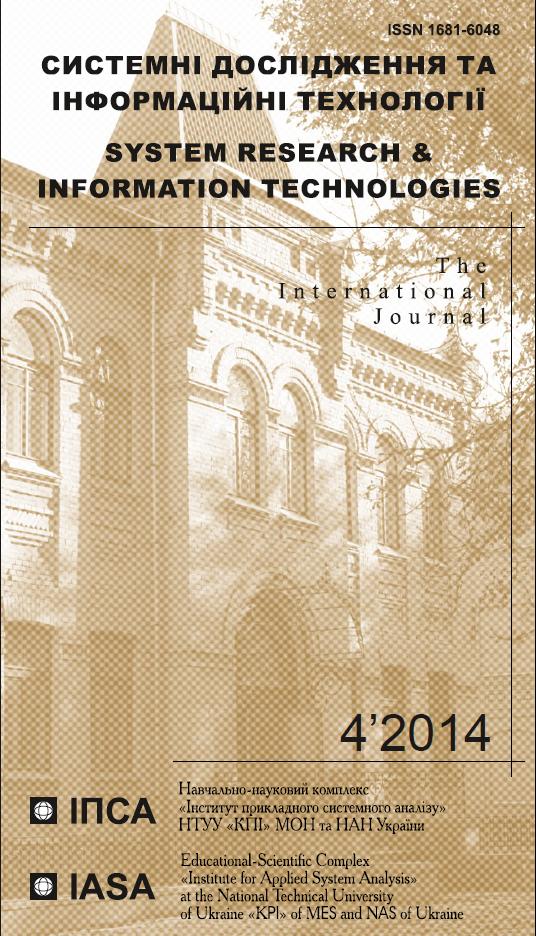Formation and digital horizons of science
Abstract
In today's world, the science and high technology are increasingly invading the space of everyday reality, affect the human interaction with the environment, rapidly change the modern society image, enhancing and complicating communication, opening up new opportunities for external and internal resources. The basic features of the current science state in the modern society are considered and summarized, the main reason for the success of which is the rapid development of a new computer technology, the creation of complex and powerful distributed systems or the computing grid infrastructure, provid-ing tools for high-performance computing, quick access to huge data sets, and effective communication. Such a science, known as the "digital science", relies on the use of e-infrastructures, services, and tools for data- and computing-intensive research in virtual and collaborative environments based on ICT in conjunction with the possibilities of openness and collaboration over the Internet. In addition, parts of this electronic infra-structure are unique scientific instruments — heavy duty electron microscopes, particle accelerators, sophisticated medical equipment, etc. New tools and new research methods make it possible not only to conduct research more efficiently, but also to create new areas of science and research, which are more open, more global and common, more creative, and closer to the society. Figs.: 3. Refs.: 38 titles.References
Nielsen M. Reinventing Discovery: The New Era of Networked Science. — Princeton, N.J.: Princeton University Press, 2011. — 272 p.
Shlyakh do Yevropeys'koho hrid / Pid redaktsiyeyu Zahorodn'oho A.H., Z·hurovs'koho M.Z. — Kyyiv: Politekhnika, 2013. — 258 s.
Z·hurovs'kyy M.Z., Petrenko A.I. Na shlyakhu do ekzabaytnoho informatsiynoho seredovyshcha e-nauky. — http://www.hpc-ua.org/hpc-ua-11/files/proceedings/1.15(84). pdf/.
Z·hurovs'kyy M.Z., Petrenko A.I. Grid-tekhnolohiyi dlya e-nauky i osvity // Naukovi visti NTUU "KPI". — 2009. — #2. — S.10–17.
Getov V. e-Science: The Added Value for Modern Discovery. — www.computer.org/.../mco2008110030.html/.
European Grid Infrastructure. — www.egi.eu/.
Hrid-nfrastruktura Ukrayiny: kerivnytstvo Hrid. — http://ung.in.ua/.
Kuznetsov S. Perspektivy elektronnoy nauki. — http://citforum.ru/computer/2008-11/.
e-Science Magazine. — http://sciences.adelaide.edu.au/schools-resources/e-science/.
E-Science Grid. — www.escience-grid.org.uk/.
e-ScienceTalk. — www.e-sciencetalk.org/.
Shannon Bohle. What is E-science and How Should it be Managed? —http://www.scilogs.com/scientific_and_medical_libraries/what-is-e-science-andhow-should-it-be-managed/.
e-Science: Harnessing the power of the internet for environmental research. —http://www.nerc.ac.uk/research/funded/programmes/escience/escience.pdf/.
Opening Science / Edited by Sönke Bartling & Sascha Friesike. — Publishing Bartling, 2014. — IX. — 339 p. — http://book.openingscience.org/.
Otkrytaya nauka i otkrytoye obrazovaniye. — http://habrahabr.ru/post/124383/.
Nauka pod zamkom. Pervaya chast’. — http://habrahabr.ru/post/189944/.
Nauka pod zamkom. Vtoraya chast’ (perevod). — http://habrahabr.ru/post/190046/.
Nielsen M. The future of science. — http://michaelnielsen.org/blog/the-future-ofscience/.
Otkrytaya nauka. — http://www.strf.ru/material.aspx?CatalogId=221
Center for Open Science. — http://www.centerforopenscience.org/.
Open Science Directory (about 13000 scientific journals). — http://www.opensciencedirectory.net/.
Open Science Data Cloud. — https://www.opensciencedatacloud.org/.
ScienceOpen. — https://www.scienceopen.com/.
The Open Science Repository. — www.open-science-repository.com/.
Consultation on "Science 2.0": Science in Transition. — http://blog.agro-know.com/?p=1780/.
Burgelman J.-C., Osimo D., Bogdanowicz M. Science 2.0 // First Monday. —
— 15, № 7. — http://firstmonday.org/ ojs/index.php/fm/ article/view/2961/2573 #author/.
Greenhalgh L. Science 2.0 emerges on European agenda. Commission plans consultation on "future of science". — http://www.researchresearch.com/index.php?articleId=1341042&option=com_news&template=rr_2col&view=article/.
What’s Science 2.0? // Spreadingscience. — http://www.spreadingscience.com/ourapproach/what-is-science-20/.
Public consultation "Science 2.0: Science in transition" launched. — http://www.cetaf.org/news/public-consultation-science-20-science-transition-launched/.
Greenhalgh L. Science 2.0 emerges on European agenda // Research Europe. — 2014. — № 379. — Р.1–2.
EU Call: Open Digital Science. — http://uelresearch.wordpress.com/ 2014/08/01/eucall-open-digital-science/.
Digital Science. — http://ec.europa.eu/digital-agenda/digital-science/.
Digital Sciences as a key Enabler for Innovation. — http://www.picturelab.tv/2013/01/26/digital-science-overview/.
Presner T.S., Johanson C. The Promise of Digital Humanities: A White Paper. 1–19, 2009. — http://www.digitalhumanities.ucla.edu/.
Svensson P. The Digital Humanities as a Humanities Project // Arts and Humanities in Higher Education, 2012. — 11. — № 1–2. — Р. 42–60.
World Digital Library. — www.wdl.org/.
Pelagesha N. TSifrovaya biblioteka dlya vsey Evropy // Zerkalo nedeli. Ukraina. — № 6. — S. 14.

